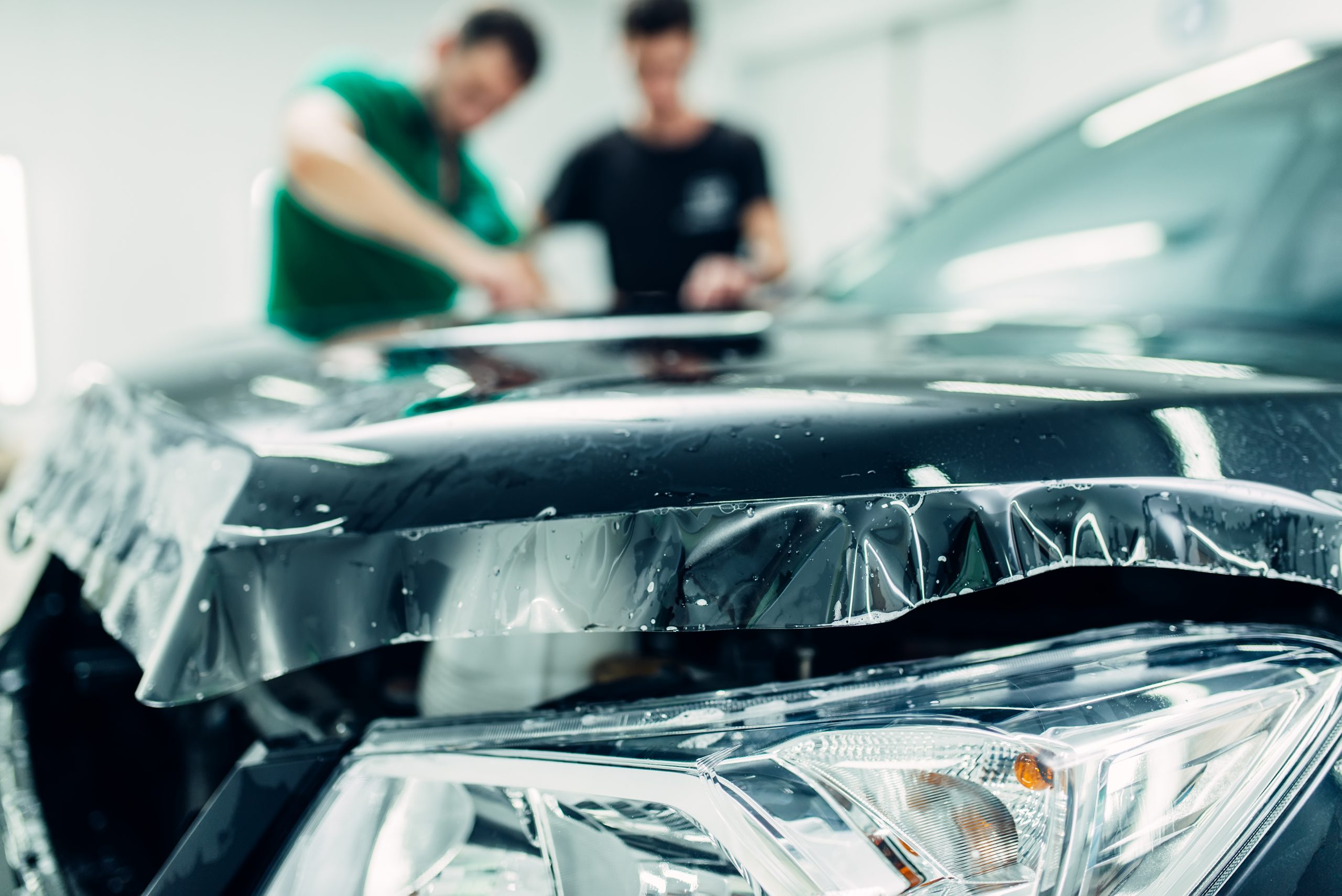Whether you drive a sports car or an SUV, it’s likely that you take pride in keeping your car looking new and pristine. Unfortunately, the reality is that even with the best maintenance, your car’s paint job can start to suffer from scratches, scrapes, and oxidation. The fact is that damage to your car’s paint job is almost inevitable over time, as debris on the road can chip and scratch your car’s once flawless finish. Even something as seemingly harmless as washing your car with a dirty sponge can seriously damage your paint job. Fortunately, a paint protection film (PPF), which is a thin layer of invisible film that can be added to a car’s exterior to protect its finish, can go a long way in preserving your car’s paint job.
First developed by the military over 40 years ago, paint protection films have come a long way in recent years, and improvements in technology means that they do a better job than ever at protecting cars from the elements. However, as with any product that has been around this long, there are myths and misconceptions surrounding PPFs that often make drivers hesitant to add one to their vehicle. To help you better understand paint protection films, here is a look at 5 PPF myths debunked.
1.Paint Protection Films Can’t Be Waxed
A common misconception about paint protection films is that they can’t be waxed, thus making your car more difficult to maintain; however, this simply isn’t true. The reason for this myth is that people often confuse PPFs with aesthetic vinyl car wraps, such as those that are used to make a car look matte, metallic, or chrome. These wraps are made from a more delicate material that is quite thin, and waxing a vinyl-wrapped car will then destroy the finish; however, this is not the case with a paint protection film.
In fact, it can actually be a good idea to wax a car that has a PPF, as this will add an additional layer of protection to your car’s paint job. Just make sure that you consult your installer/manufacturer’s instructions to find out which waxes and cleaning products are safe to use on your PPF. Of course, a car with a paint protection film doesn’t necessarily need to be waxed, as the film will serve a similar function by helping to protect your car’s paint job from the elements.
2. PPFs Damage The Paint
One of the most common myths about PPFs that make drivers wary of them is that these films damage a car’s paint; however, this could not be further from the truth. A paint protection film’s whole job is to protect a car’s finish, not cause further damage. While PPFs use an adhesive to create a tight fit to your car, these films can be removed when they are no longer wanted without causing any harm to your car’s paint. Of course, if you no longer want your PPF, it is important that you have it professionally removed. If a paint protection film is not removed correctly, this can damage your paint and leave behind glue residue. However, when installed and removed by an experienced professional, a paint protection film will not damage your car.
3. They Are Only Necessary if You Drive Off-Road
Another misconception about paint protection films is that they are only necessary if you frequently take your car off-roading or you often drive your car in rough conditions; however, the reality is that a paint protection film can benefit any car. The truth is that, unless your car is always parked in a garage and never goes anywhere, your car’s paint job is always susceptible to damage. Even sitting in a parking lot, your car can get scratched by someone walking by, or a bird can poop on it, which can start to corrode your paint job. Even on city streets and highways, everyday hazards can pose a threat to your car’s finish, such as gravel that can be kicked up by another driver.
It is particularly important that you invest in a paint protection film for your car if you frequently drive on the freeway. At high speeds, even small debris that can get kicked up by other cars such as sand can scratch or chip your car’s paint job. A PPF will then help protect your vehicle from everyday hazards that can threaten your car’s finish.
4. Paint Protection Films Turn Yellow Over Time
This is an outdated paint protection film myth that has been hard for many PPF installers and manufacturers to shake. While it is true that, in the early days of paint protection films, PVC-based films were used that were known to peel, crack, and turn yellow due to constant UV exposure, this is no longer the case. Modern PPFs are made from thermoplastic polyurethane (TPU) that has been specifically designed to hold up against the elements. In fact, XPEL is so confident in their paint protection film that they back it with a 10-year warranty. As long as you invest in a high-quality PPF, you should not have to worry about your film showing signs of deterioration for years to come.
5. You Can Only Add PPFs to New Cars
For some reason, there is a belief amongst drivers that you can only add a paint protection film to a brand new vehicle. While it is true that the best time to invest in a PPF is as soon as possible after buying a car, as this will protect your car’s exterior from potential damage, the reality is that you can have a paint protection film installed at any time. In fact, while you may think that your car is too old to add a PPF, any car can benefit from the protection these films can provide. Even if your car already has a few small dings, chips, or scratches, adding a paint protection film can help prevent future damage from occurring, keeping your car looking as nice as possible.
While there are many myths surrounding paint protection films, the fact is that an expertly installed, high-quality PPF can protect your car from the elements for years to come. Feel free to visit us to learn more about paint protection films and the benefits of adding one to your car.


